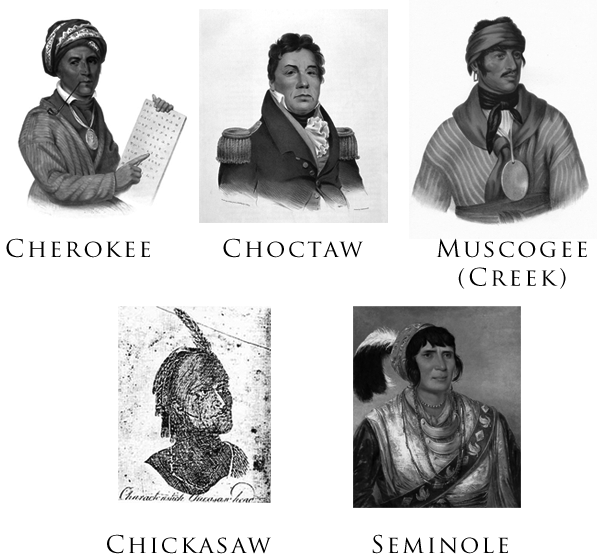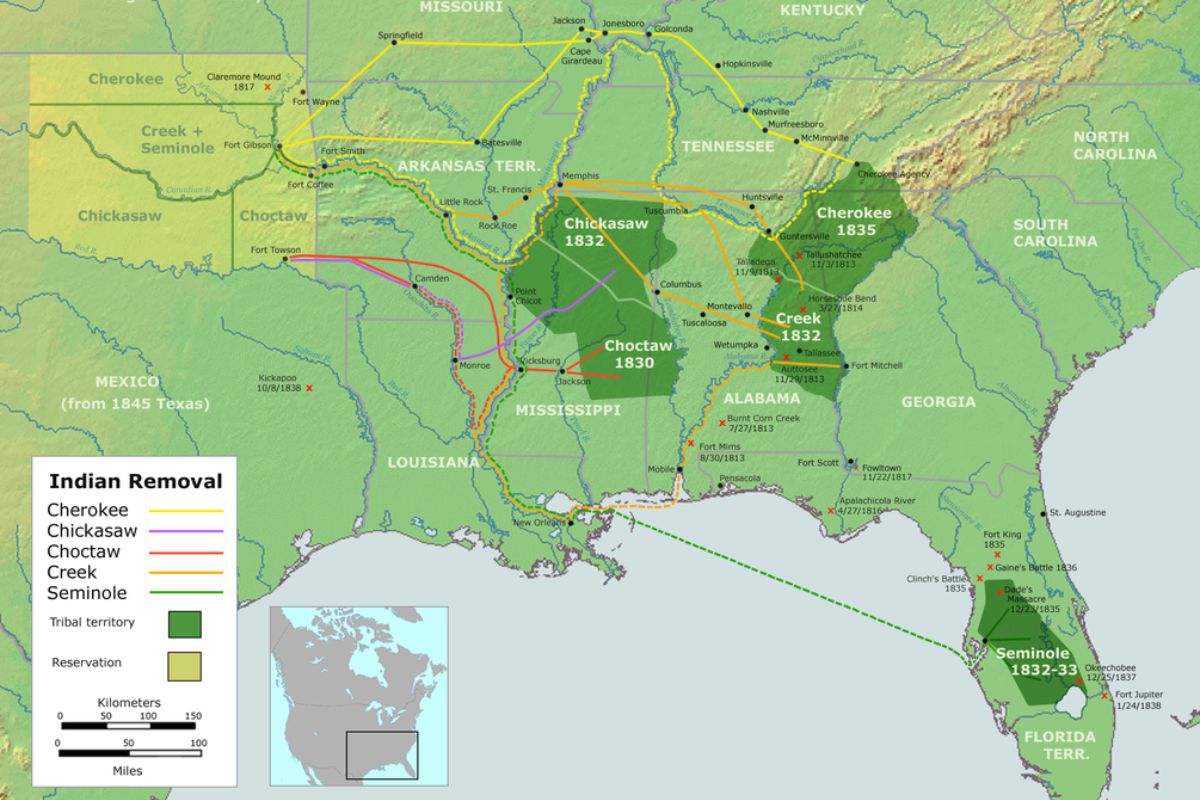The Indian Removal Act, signed into law by President Andrew Jackson in 1830, was a controversial piece of legislation that authorized the forced removal of Native American tribes from their ancestral lands in the southeastern United States.
Its primary aim was to open up land for white settlement and facilitate the expansion of the United States. The Act led to the infamous Trail of Tears, resulting in the forced relocation of thousands of Native Americans, particularly the Cherokee Nation, to lands west of the Mississippi River.
The Act faced opposition from Native American tribes and some white Americans, and it continues to be recognized as a dark chapter in American history, highlighting the violation of Native American rights and the lasting impact on their communities.
Indian Removal Act Facts
1. The Indian Removal Act was signed into law by President Andrew Jackson on May 28, 1830
The Indian Removal Act of 1830 was a piece of legislation passed by the United States Congress and signed into law by President Andrew Jackson.
Also Read: Timeline of Trail of Tears
The Act gave the federal government the authority to negotiate treaties with Native American tribes residing in the southeastern states, such as Georgia, Alabama, Mississippi, Florida, and Tennessee, for their voluntary removal to lands west of the Mississippi River.
2. The primary goal of the Indian Removal Act was to open up land for white settlement and expansion of the United States
The Act was primarily motivated by the desire to acquire Native American lands for white settlement and to facilitate the expansion of the United States.
President Jackson and his supporters believed that removing Native American tribes from the southeastern states would help to avoid conflicts between them and white settlers, as well as open up fertile lands for agriculture and economic development.
3. The Act resulted in the forced removal of tens of thousands of Native Americans from their ancestral lands
The Indian Removal Act resulted in the forced removal of tens of thousands of Native Americans from their ancestral lands. The most infamous example of forced removal was the Trail of Tears, which involved the Cherokee Nation.
The Cherokees were forcibly relocated from their lands in Georgia to the Indian Territory (present-day Oklahoma) in the late 1830s. The journey was marked by harsh conditions, inadequate provisions, and a lack of medical care, leading to the death of thousands of Cherokee people.
The Trail of Tears is a tragic and widely recognized symbol of the injustices inflicted upon Native American tribes during the era of Indian removal.

4. The Indian Removal Act faced significant opposition from both Native American tribes and some white Americans
The Indian Removal Act faced opposition from both Native American tribes and some white Americans. Many Native American tribes, including the Cherokee, Creek, Chickasaw, Choctaw, and Seminole, resisted removal and fought against the implementation of the Act.
They argued that they had established thriving communities on their ancestral lands and should be allowed to stay.
White Americans who opposed the Act, such as missionaries, humanitarians, and some politicians, believed it violated the rights and sovereignty of Native American tribes. They advocated for a more humane and just treatment of Native Americans, emphasizing the need for fair negotiations and the recognition of their land rights.
Despite this opposition, the Act was passed and enforced, leading to the forced removal of numerous Native American tribes from their homelands.
5. The Act was controversial even at the time of its passage
In addition to Native American opposition, there were also voices among white Americans who opposed the Act. Some members of Congress, including Davy Crockett and Daniel Webster, expressed concerns about the moral implications of forcibly displacing Native American tribes.
They argued that the Act violated principles of justice, fairness, and human rights. However, these dissenting voices were ultimately outnumbered by the supporters of the Act.
6. The Act was based on the assumption that Native American tribes were “uncivilized” and that their removal would be in their best interest
The Indian Removal Act was grounded in the belief that Native American tribes were “uncivilized” and needed to be assimilated or relocated for their own benefit.
Proponents of the Act argued that removal would protect Native Americans from further conflicts with white settlers, who were encroaching on their lands.
They also contended that relocation to the West would provide Native Americans with new lands where they could maintain their culture and way of life.
However, it is essential to recognize the flawed assumptions behind these arguments. Native American tribes had well-established societies, governments, and economies that predated European colonization.
Many tribes had adapted to and integrated aspects of European-American culture, such as agriculture, written languages, and legal systems. The notion of Native Americans as “uncivilized” or in need of assimilation was a biased perspective rooted in Eurocentric ideologies of the time.
7. Several Native American tribes were affected by the Indian Removal Act, including the Cherokee, Creek, Chickasaw, Choctaw, and Seminole
The Indian Removal Act impacted several Native American tribes, collectively known as the “Five Civilized Tribes”: the Cherokee, Creek, Chickasaw, Choctaw, and Seminole.
These tribes were labeled as such due to their adoption of certain aspects of European-American culture, such as agriculture, written language, and a centralized government structure. Despite their efforts to assimilate and adapt, these tribes were still targeted for removal under the Act.
The Cherokee Nation, in particular, experienced a devastating forced removal known as the Trail of Tears. Between 1838 and 1839, the Cherokee people were forcibly removed from their ancestral lands in Georgia and forced to march westward to Indian Territory.
The journey was arduous and marked by extreme hardship, including exposure to harsh weather conditions, disease, and starvation. It is estimated that thousands of Cherokee people died during this forced relocation.
8. The Indian Removal Act had long-lasting effects on Native American communities
The Indian Removal Act had long-lasting and detrimental effects on Native American communities. The forced removal disrupted the social fabric of tribes, tearing apart families and communities.
It caused the loss of ancestral lands, which held deep cultural and spiritual significance for Native Americans. The removal also led to the erosion of tribal sovereignty and self-governance, as tribes were relocated to unfamiliar territories and often faced continued pressure from white settlers.
9. The Indian Removal Act set a precedent for the federal government’s policy of relocating Native American tribes in the 19th century
The Indian Removal Act set a precedent for the federal government’s policy of relocating Native American tribes throughout the 19th century. Following the Act, similar removals took place with other tribes, such as the Potawatomi, Ottawa, Shawnee, and many others.
These removals were often marked by forced marches, loss of life, and the displacement of Native American communities from their homelands.
10. The Indian Removal Act remains a dark chapter in American history and is widely condemned today for its detrimental impact on Native American communities
Today, the Indian Removal Act remains a dark chapter in American history and is widely condemned for its detrimental impact on Native American communities. It is seen as a violation of human rights, sovereignty, and justice.
The Act’s legacy continues to shape discussions surrounding indigenous rights, reparations, and efforts towards reconciliation with Native American tribes.
It serves as a reminder of the ongoing struggle for justice, recognition, and the preservation of Native American cultures and lands. Efforts to address the historical and ongoing injustices faced by Native Americans include initiatives to promote tribal sovereignty, land repatriation, cultural preservation, and the recognition of treaty rights.
